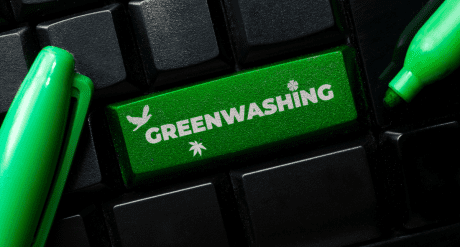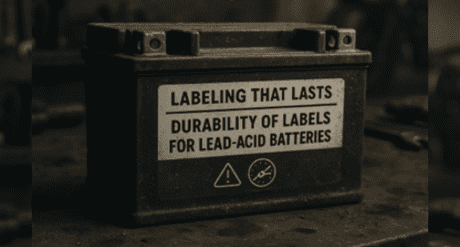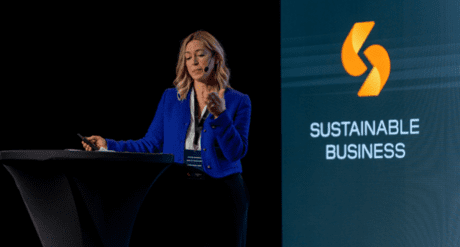
The Weekly Pulse: 19th Sep – 23rd Sep

What’s HOT in our Regulatory World at the moment?
What are our clients looking at?
This week’s trending sources in C2P
- EU: Classification, Labelling and Packaging of Substances and Mixtures, Regulation (EC) No 1272/2008 – Proposed Amendment – (on new hazard classes and criteria for substances with endocrine disrupting, PBT, vPvB, PMT and vPvM properties) Draft Regulation, September 2022
- EAEU: Approving Technical Regulations Safety of Low Voltage Equipment (LVE), Decision No. 768, August 2011 – Amendment – (on validity of mandatory conformity assessment documents) Decision No. 113, 2022
- Norway: REACH Enforcement, Regulation No. 516, 2008 – Amendment – (on implementation of Regulation (EU) 2021/2030) Regulation No. 1544, 2022
What is our Content Team talking about?
US ratifies Kigali Amendment to the Montreal Protocol on Substances that Deplete the Ozone Layer – Joanne O’Donnell
On 21 September, the US Senate finally ratified the Kigali Amendment to the Montreal Protocol on Substances that Deplete the Ozone Layer.
The Amendment, which provides for the phase-down of hydrofluorocarbons (HFCs), required developed countries to phase down HFCs by 2019 whilst developing countries must follow with a freeze of HFCs consumption levels in 2024, with some countries freezing consumption in 2028. By the late 2040s, all countries are expected to consume no more than 15-20 per cent of their respective baselines.
Commonly used in refrigeration and air conditioning as substitutes for ozone-depleting substances eliminated by the original Montreal Protocol, HFCs are known to be powerful greenhouse gases and, thus, contributors to climate change although they do not deplete the ozone layer.
US President Biden announced that the US is now “back at the table leading the fight against climate change” and that ratification will allow the country to “lead the clean technology markets of the future, by innovating and manufacturing those technologies here in America”.
He also announced that it would “spur the growth of manufacturing jobs, strengthen U.S. competitiveness, and advance the global effort to combat the climate crisis.”
What are our Knowledge Partners talking about?
DOE Expands Battery Charger Test Procedure to All Wireless Battery Chargers – Keller and Heckman LLP
Recently the Department of Energy (“DOE” or the “Department”) published a final rule amending the test procedure used to demonstrate that battery chargers meet the energy efficiency requirements at 10 C.F.R § 430.32(z).[1] The final rule reorganizes certain subsections of the test procedure and includes several administrative revisions to, for example, correct cross-references and clarify symbology. More importantly, the final rule establishes a new appendix Y1 that expands coverage of the test procedure to include all inductive wireless battery chargers, not just those designed for use in wet environments. The final rule also establishes a new procedure for measuring active, standby, and off mode, and updates the external power supply (“EPS”) selection criteria.
Since the energy conservation regulations require that a test procedure rulemaking must be finalized before a proposed rule amending or issuing a new energy conservation standard can be published, this final rule appears to signal DOE’s intent to expand the battery charger energy conservation standards to all wireless chargers. Until such a rule is finalized, compliance with the amendments to the current battery charger test procedure at 10 C.F.R. Appendix Y to Part 430 will become mandatory beginning March 7, 2023. Appendix Y will serve as the test procedure until the compliance date of any final rule establishing amended energy conservation standards based on the newly established appendix Y1.
Expanding Coverage of Inductive Wireless Battery Chargers
At present, the battery charger energy conservation standards and test procedure only address inductive wireless battery charger products that have a battery energy of ≤ 5 watt-hours (Wh) and are designed and manufactured to operate in a wet environment. In other words, battery chargers in products such as wireless toothbrushes and electric shavers. Due to advancements in the technology now employed in wireless devices, DOE is expanding coverage under the new appendix Y1 to include testing of wireless chargers meant for both dry and wet environments and differentiating these chargers based on the following definitions:
- “fixed-location wireless chargers” or inductive wireless battery chargers that incorporate a physical receiver locating feature (e.g., by physical peg, cradle, locking mechanism, magnet, etc.) to repeatably align or orient the position of the receiver with respect to the transmitter; and
- “open-placement wireless chargers” or inductive wireless chargers that do not incorporate a physical receiver locating feature (e.g., by a physical peg, cradle, locking mechanism, magnet, etc.) to repeatably align or orient the position of the receiver with respect to the transmitter.
In addition, the rated battery energy limit of 5Wh will increase to 100Wh under appendix Y1 to reflect changes in the market. Indeed, as DOE recounts in the preamble, some fixed-location wireless chargers on the market are designed to charge products with energy levels of up to ~80Wh (e.g., power tools).
As such, DOE believes that expanding the limit to 100Wh will accommodate future product designs that may have larger battery energies.
It is important to note, however, that the scope of this expansion applies to fixed-location wireless chargers in all modes of operation, but only applies to open-placement wireless chargers in no-battery mode.
No-battery mode is a subset of standby mode, where a battery charger is connected to the main power source, but a battery has not yet been inserted.
Although DOE contemplated expanding the test procedure to include active mode testing for open-placement wireless chargers, the Department expressed concerns about accounting for variations in efficiency measurements due to receiver placement and non-battery-charging related features – e.g., foreign object detection circuits – associated with these chargers.
DOE is continuing to work with industry bodies to gather consumer usage data and develop an appropriate test procedure for active mode open-placement wireless charger testing.
Removing the Integrated UEC Calculation
DOE is also moving away from the integrated unit energy consumption (“UEC”) approach for measuring active, standby, and off mode power consumption and shifting towards a mode-specific approach.
By way of brief background, the Energy Policy and Conservation Act (“EPCA”) requires the use of an integrated metric for measuring overall energy efficiency, energy consumption, or other energy descriptors, along with standby and off mode energy consumption unless the use of such an integrated metric is infeasible.
In this case, DOE has determined that the integrated UEC metric will become increasingly impracticable to maintain because the evolving nature of battery charger technology will require the Department to frequently update the usage profiles for each battery charger product class employed as part of the integrated UEC calculation.
This would, in turn, require manufacturers to retest and recertify their products at more frequent intervals.
Accordingly, appendix Y1 will employ a mode-specific approach that relies on a separate metric for each of the modes of operation.
Specifically, active mode energy (Ea) will be calculated from the combined charge and maintenance mode test and be measured from the point when the battery was first inserted, or plugged in, until the measured data indicates a drop in power associated with the transition from active charging to maintenance mode.
Standby mode power (Psb), on the other hand, will represent the summation of power of battery maintenance mode power (Pm) and no-battery mode power (Pnb). Finally, the off mode (Poff) measurement will apply to products with manual on-off switches where the battery charger is connected to the main electricity supply, not connected to the battery, and powered off.
Off-mode energy consumption may also be measured for products with integral batteries – e.g., products that use a cradle and/or adapter for power conversion and charging.
Appendix Y1 provides specific measurement procedures based on the configuration.
Introducing A New EPS Selection Hierarchy
Another change that may significantly impact a wide variety of consumer products is the modification of the EPS selection criteria under the test procedure at appendix Y1. It is a common misconception that companies are not subject to the DOE regulations if they do not sell their products with a power adapter.
However, the test procedure sets out a clear set of appropriate testing alternatives if an EPS is not provided.
Note that these alternatives will be modified once compliance with appendix Y1 is required.
The current test procedure specifies that battery chargers must be tested with the EPS packaged with the charger or the EPS that is either sold or recommended by the manufacturer.
If an EPS that meets these requirements does not exist, the procedure calls for testing with a 5.0V DC input for products that draw power from a computer USB port or using the midpoint of the rated input voltage range for all other products. According to DOE, these alternative testing procedures are producing unrepresentative results by (i) assuming that a 5.0V DC input is appropriate for all products that draw power from a computer USB port or (ii) testing without an EPS when battery chargers are operated with an EPS by consumers in the field.
Based on this assessment, the Department has amended the test procedure at appendix Y1 to improve its representativeness.
Specifically, appendix Y1 clarifies how manufacturers should select an EPS to demonstrate compliance with the battery charger energy standard when an EPS is not pre-packaged with the battery charger based on a selection hierarchy. This hierarchy of alternatives is as follows: (1) an EPS sold and recommended by the manufacturer; (2) an EPS that the manufacturer recommends for use in the manufacturer materials; (3) any commercially-available EPS that is both minimally compliant with the energy conservation standard at 10 C.F.R. § 430.32(w) and satisfies the EPS output criteria specified by the battery charger manufacturer.
Note that if the EPS used for certification testing is no longer available, DOE would test the battery charger with any minimally compliant EPS that meets the performance criteria during compliance and enforcement testing.
Comment
According to the Department’s Spring 2022 regulatory agenda, we expect a proposed rule reviewing the battery charger energy conservations standards, and likely proposing standards in parallel with the new test procedure at appendix Y1, by April of 2023. Please do not hesitate to contact us if you have questions about how the amended battery charger test procedure may impact your products.
[1] Energy Conservation Program: Test Procedure for Battery Chargers, 87 Fed. Reg. 55,090 (Sept. 8, 2022).
What are our Clients asking about?
Can you tell us about the new Vietnam Draft RoHS requirements for conformity assessment – must companies test their products in a registered lab or is self-certification enough, in order to be able to import their products to Vietnam? Which products are excluded from the regulation? – Answer by Valentina Marchetti
ccording to Chapter 2 on conformity assessment, the declaration of conformity for electrical and electronic products must be based on the certification results of certification organizations that have registered the field of operation as prescribed in Decree No. 107/2016/ND-CP, Decree No. 154/2018/ND-CP or recognised in accordance with the provisions of Circular No. 27/2007/TT-BKHCN.
The certification of conformity differs for domestically-produced and imported goods.
For imported electrical and electronic products the following applies:
- Method 1 specified in Appendix II of Circular No. 28/2012/TTBKHCN and Circular No. 02/2017/TT-BKHCN; or
- Method 5 at the overseas production facility upon request from the foreign manufacturer.
Regarding product exclusions, this draft Circular doesn’t apply to electrical and electronic products listed in Appendix II, i.e.:
- Electrical and electronic components; batteries, accumulators;
- Spare parts used to repair, reuse or upgrade electrical and electronic products;
- Electrical and electronic products which are gifts, souvenirs, goods for exhibition and product introduction; hand luggage, movable property of organizations and individuals; goods temporarily imported for re-export, goods in transit;
- Electrical and electronic products for military purposes; satellite equipment;
- The list of fluorescent lamp products specified in the Appendix to the National Technical Regulation QCVN 02:2020/BCT which regulates the mercury content in fluorescent lamps;
- The list of children’s toys specified in Appendix 1 of the National Technical Regulation QCVN 3:2019/BKHCN;
- Electrical and electronic products circulated on the Vietnamese market before the effective date of this Circular.
Stay Updated On Global Regulations
This information is based on the most viewed regulations on C2P this month.
Sign up to get the latest compliance news delivered to your inbox weekly, for free!
The Pulse – Weekly Newsletter
Get the latest compliance news delivered straight to your inbox








